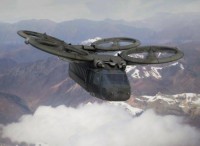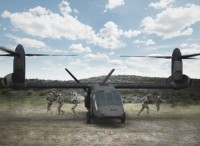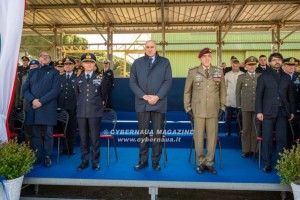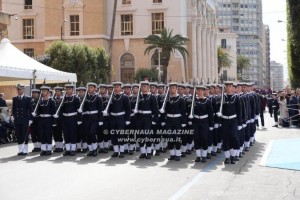Rassegne stampa
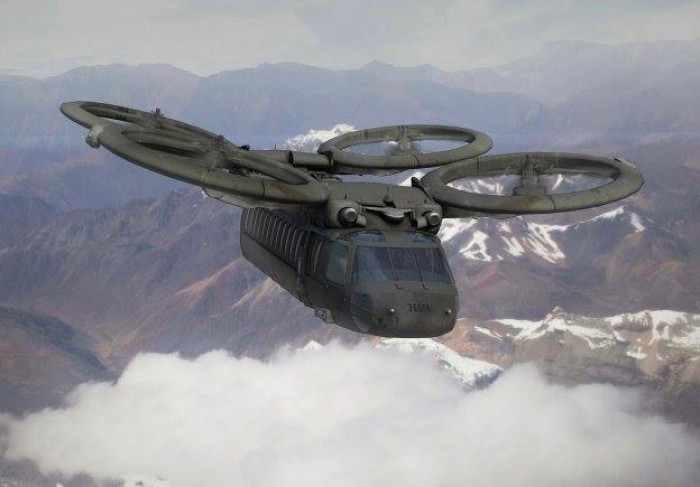
Il futuro presente
Army engineers define future aviation fleet, scritto da Dan Lafontaine, RDECOM Public Affairs
20-03-2015 - ABERDEEN PROVING GROUND, Md. (March 2, 2015) -- The U.S. Army science and technology community is charting the future of military vertical lift aviation that will enable warfighters to accomplish missions not possible today.The Army, supported by NASA and the Navy, is combining its areas of technical expertise to accomplish the aggressive scientific and engineering goals necessary to develop a new fleet of joint aircraft, said Ned Chase, deputy program director of science and technology, or S&T, for the Joint Multi-Role Technology Demonstrator/Future Vertical Lift, also known as JMR TD.
JMR TD has been established to address several of the capability gaps that cannot be satisfied by updating the current fleet.
"Let's figure out what we want this new aircraft to do, and let's go out and prove that we have the technologies available to meet those requirements. That's what we're doing with JMR TD," said Chase, with the Army Aviation and Missile Research, Development and Engineering Center, or ARMDEC, on Fort Eustis, Virginia.
The Department of Defense is using JMR TD to design and integrate the technologies that will eventually feed into the Future Vertical Lift, or FVL, and replace the military's vertical lift fleet with a new family of aircraft.
LEVERAGING EXPERTISE FROM ACROSS ARMY S&T
The Aviation and Missile Research, Development and Engineering Center, or AMRDEC, one of seven centers and laboratories that make up the U.S. Army Research, Development and Engineering Command, also known as RDECOM, is leading the S&T effort.
Chase and his team are working closely with fellow scientists and engineers within RDECOM to conceptualize research and design the many technologies that will be necessary for this future vertical lift capability.
AMRDEC will leverage its expertise in aviation; however, the team will rely upon its peer organizations for the complementary pieces. For example, RDECOM's Communications-Electronics Research, Development and Engineering Center at Aberdeen Proving Ground, or APG, is the expert in areas such as communications systems, sensors and cameras, he said.
"The one thing that we've not done in quite a long time was demonstrate that we can build an aircraft from scratch that incorporates the individual technologies that we've been working on the past 25 years," Chase said. "We have the capacity across AMRDEC to populate the aircraft with the right components--engines, rotors, structures, flight controls.
"We want to put together a roadmap to develop the radios, weapons, sensors and survivability equipment by drawing from RDECOM in preparation for FVL. We take their products and integrate them onto the platform itself. FVL is going to reflect the aggregate of RDECOM investment."
Charles Catterall, AMRDEC lead systems engineer, has worked to develop an S&T integrated product team to build an investment strategy across RDECOM.
"We are engaging our sister organizations within RDECOM. What can the command do to support this program? What resources can be brought to bear to facilitate and support this Future Vertical Lift initiative with technologies? Given a clean sheet, could you bring additional capabilities to bear? We're looking across the command," Catterall said.
Catterall said JMR TD has two components--the air vehicle demonstration, or AVD, and mission systems architecture demonstration, or MSAD. Two contract teams--Sikorsky-Boeing and Bell Helicopter--are responsible for the design, analysis, fabrication, ground testing and ultimately, flight testing of the demonstrator aircraft.
The industry proposals for FVL include the capability to carry a payload of 12 troops and four crew, hover out of ground effect at an ambient condition of 6,000 feet and 95 degrees Fahrenheit, and self-deploy 2,100 nautical miles at a speed of at least 230 knots.
The MSAD portion will integrate technology concepts from across RDECOM, as well as the Department of Defense, into an open, efficient, effective and enduring architecture.
The MSAD initiative will develop a standard reference architecture that can be used as the basis for design and implementation of an avionics architecture. This will enable hardware and software reuse across multiple mission design series aircraft and multiple vendor implementations, Chase said.
The knowledge, standards, processes and tools necessary to design and implement such a mission systems architecture that is affordable will be used to inform the government's generation of requirements for the anticipated FVL program.
Chase said that a major challenge for DoD scientists and engineers is to develop their specific pieces of technologies - whether sensors, weapons, cameras or crew systems--and ensure they function correctly within a much more demanding future aviation environment than exists today.
"This future fleet will be faster and go farther. We're trying to ensure that the other [research centers] understand how the aviation environment and constraints change when we go from flying aircraft at 130 knots to 250 knots," Chase said. "The environment we're creating for weapons, sensors and radios is much different with FVL than the current fleet. FVL will operate in a different performance regime."
SEE MORE:
www.army.mil/article/143354/Army_engineers_define_future_aviation_fleet/
Redazione

Hanno giurato gli allievi marescialli dell’Esercito Italiano e dell’Aeronautica Militare
Cerimonia congiunta presso la Scuola Marescialli dell’Aeronautica Militare a...
Cerimonia congiunta presso la Scuola Marescialli dell’Aeronautica Militare a...
Marinai e Carabinieri hanno giurato insieme
Durante il periodo di permanenza presso le rispettive scuole di formazione, gli...
Durante il periodo di permanenza presso le rispettive scuole di formazione, gli...
Roberto Vannacci a Palazzo Chigi di Ariccia
Organizzato da ''I figli di nessuno'' il convegno di presentazione de ''Il Mondo...
Organizzato da ''I figli di nessuno'' il convegno di presentazione de ''Il Mondo...
Rassegne stampa
19-04-2024 - Giovedì scorso gli Stati Uniti hanno impedito al Consiglio di Sicurezza dell’ONU di portare avanti la richiesta...
16-04-2024 - KABUL (Pajhwok): Iran and the US have swapped threats at an emergency meeting of the United Nations Security...
16-04-2024 - BAMYAN CITY (Pajhwok): More than 130,000 tourists, including foreigners, visited central Bamyan province to...
02-04-2024 - The Taliban-run railway authority announced Thursday the signing of a contract with Russian company Gamma for...
25-03-2024 - The office of the economic deputy PM tweeted that Mullah Abdul Ghani Baradar said that many facilities will...
25-03-2024 - At least 12 others wounded in blast that targeted a group of people waiting outside a bank in city centre
At...

Isabella Rauti, sottosegretaria di stato alla Difesa, ha partecipato alla cerimonia per...
“Signs Publishing nasce nel 2017 per passione più che per affari…”
Con queste parole...
Tutto è pronto per “Aero 2024”, trentesima edizione del principale salone internazionale...
Verona, 14 aprile 2024 – L'Esercito Italiano partecipa per la seconda volta al “Vinitaly”,...
Un'occasione per fare il punto con le istituzioni del territorio sui progetti presenti e...
Il ministro della Difesa, Guido Crosetto, ha deposto una corona d’alloro al Sacello del...
Il 16 e 17 marzo scorso è stata una fine settimana di canti a Merano per il 6° raduno...





